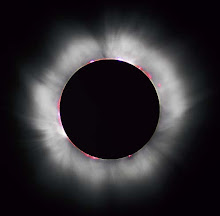Genesis 2:8 And
Jehovah God planted a garden eastward, in Eden; and there he put the man whom
he had formed. 9 And out of the ground made Jehovah God to grow every tree that
is pleasant to the sight, and good for food; the tree of life also in the midst
of the garden, and the tree of the knowledge of good and evil. 10 And a river
went out of Eden to water the garden; and from thence it was parted, and became
four heads. 11 The name of the first is Pishon: that is it which compasses the
whole land of Havilah, where there is gold; 12 and the gold of that land is
good: there is bdellium and the onyx stone. 13 And the name of the second river
is Gihon: the same is it that compasses the whole land of Cush. 14 And the name
of the third river is Tigris: that is it which goes in front of Assyria. And
the fourth river is the Euphrates.
Verses 8, 10-14
depict the boundaries for the geographic region that encompassed all of Jesus’
movements during his lifetime as described in the four Gospels.
After Jesus’
incarnation, the wise men brought gifts including gold. This is symbolized in
verses 8, 10-11 wherein God puts the man in Eden where there were valuable
metals including gold. The three valuable metals mentioned in verse 12 allude
to the three valuable gifts of the wise men.
The river that went
out of Eden and parted and became four heads is the story of Jesus that parted
into the four gospels.
The first river,
Pishon, which compasses the whole land of Havilah symbolizes the gospel of
Matthew. Traditionally, Matthew left Judea for the area of Havilah (Arabia)
where he preached until he died. According to some of the early church leaders,
Matthew’s gospel was written first. It is also interesting to note that the
first river in Genesis is noted for having gold and the Gospel of Matthew is
the only gospel with the story of the visit of the wise men bringing gifts
including gold.
The second river,
Gihon, flows from Ethiopia to the Nile in Egypt and symbolizes the gospel of
Mark. Traditionally, Mark eventually reached Egypt and became the first bishop
of Alexandria, Egypt and lived there until he died. According to some of the
early church leaders, Mark’s gospel was written second.
The third river,
Tigris, symbolizes the gospel of Luke. The Tigris formed the central portion of
the Assyrian Empire. Luke the Evangelist is believed by many to have been from
Antioch, Syria which had once been part of the Assyrian Empire. According to
some of the early church leaders, Luke’s gospel was written third.
The fourth river,
Euphrates, symbolizes the gospel of John. The Euphrates originates in Asia
Minor (Turkey) which was the area where the apostle John lived after leaving
Judea until he died. According to some of the early church leaders, John’s
gospel was written fourth.
The foreshadowing
of the four gospels by the four rivers coming from Eden match the traditional
chronological order of authorship of the four gospels based on the writings of
the early church fathers. Also, the geographic regions associated with each of
the four rivers match the geographic regions traditionally associated with each
of the authors of the four gospels. Furthermore, information unique to the
first river includes information unique to the first gospel, Matthew.
Now I’m going to
point something out to skeptics. Why do you think that the author of Genesis
listed the rivers in a specific order of one through four? It serves no
literary purpose. The author of Genesis could have numbered the four rivers in
any order or more appropriately not numbered them at all. It is also odd that
he numbers them in the order that he did. Geographically, Gihon is the furthest
west and the furthest south while Tigris is the furthest north and east. So if
he were to number the rivers in a geographic direction either Gihon or Tigris
should have been first or fourth but they aren’t. Also if he were ordering from
proximity to the center of Eden, then Tigris should have been fourth since it
is the furthest from the center of Eden, but it is third. Since there is no
literary or geographic reason to give the first to fourth order for the four
rivers, then there must have been another reason. That reason was prophetic. It
is not a coincidence that the four rivers listed in their specific order of one
to four matches the traditional chronological order of authorship of the four
gospels and the associated geographic regions for their authors.
J. Clontz – Editor
of the Comprehensive New Testament





No comments:
Post a Comment